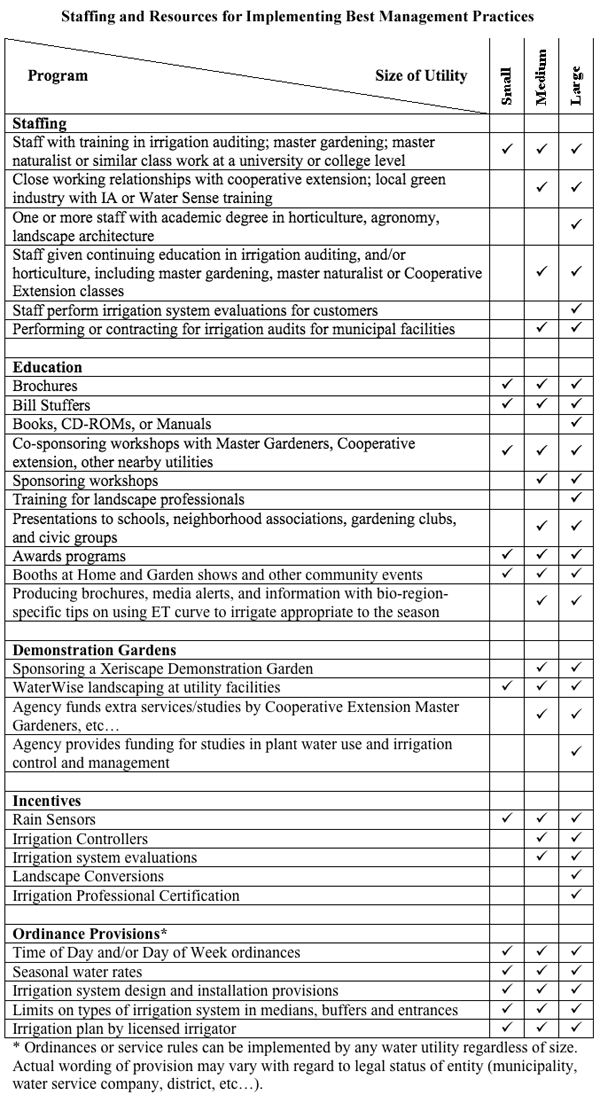Implementation
Implementation
The Best Management Practices Guide has specific
recommendations for program implementation and tracking. Those concepts are
not repeated in this section. Rather, this includes some information, gathered
from input of landscape conservation professionals from different utilities,
about potential program elements to consider based upon the size of a utility.
Utilities should be considered as small if less than 3,300 to 49,999 connections,
as medium with 50,000 to 99,999 connections, and as large with 100,000 connections
or more. Some very small utilities, those with less than 3,300 connections,
have implemented educational programs in using educational brochures and
bill stuffers.

Cost Effectiveness Considerations
Using the cost-effectiveness model presented with the Best Management Practices
Guide (p.122-126), the utility will need to obtain certain data and make
some assumptions about its goals for the program.
Customer billing data can give a clue to the number of customers that have
a pattern of large increases in water use in summer months. These indicate
a high potential for irrigated landscapes, although some commercial customers
may be using large quantities of cooling water in the summer months.
The number of probable landscape irrigators should be determined and an
amount of water savings in gallons per customer per day per measure must
be estimated. The model in the Guide indicates a savings rate of 50 qpd for
irrigation surveys for customers and 470 qpd for commercial customers. Values
for landscape conversion programs show in the range of 100 qpd for El Paso,
although other programs have not been as consistent. Water savings estimates
for landscape education programs are not available.
A program penetration goal needs to be determined, which is multiplied times
the total estimated customers who irrigate to determine both the number of
surveys or conversions the program will strive to perform, and is used to
estimate the cost and potential water savings of the program. The length
of the proposed program will need to be entered, and the estimated life of
the measure.
The irrigation survey program has a natural replacement rate of zero because
experience and discussions with professionals have determined that few, if
any, customers seek out irrigation surveys without a utility sponsored program.
However it includes a 1% free ridership value to account for some customers
who will access the program to help them fix a problem of which they are
already aware.
Net program costs for the irrigation survey in 2004 are estimated at $51
per residential survey and $202 per commercial survey. These values should
be increased for inflation and can be adjusted in the model to reflect a
utility’s actual costs. Such costs could be based upon the value of
utility staff time to perform an irrigation system evaluation or the cost
of a rebate to provide an incentive for customers to use a landscape professional
to perform the service.
Based upon the values entered, the model calculates the cost of water per
AF saved, the total cost of the program, the net present value of water saved
per AF, and the estimated water saved over the life of the measure. The values
of these variables can be used to determine the value of the proposed program,
how large or for how long a program should be designed and operated. The
final values will be dependent both upon customer data, and upon the assumptions
the planner uses in the model which can be adjusted.
|





